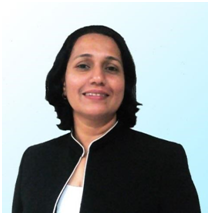Environmentally Sustainable Burial System: A Case Study With Addtional Applications
India is home to 1/6th of the world's population. 66% of the citizens follow Hinduism where the deceased is cremated on a wooden pyre. About 30% of the population bury the dead, this includes Muslims, Christians and Ligytes. In recent years there has been scarcity of space for burial of the dead as many bodies were taking double the time to decompose ( from 3years to 7 years). This has become a problem area for urban settlements where land is a prime commodity due to boom in real estate. Moreover the need for environmentally conscious solution for managing the remains of the deceased without affecting the religious belief and traditions.
By Dr. (Mrs.) Francin Pinto,Managing Director, 3-S EnvoProjects Pvt Ltd

Reasons for reduction of decomposition rate
- Human bodies are made of complex protein, which contain nitrogen, carbon and hydrogen. These require special bacteria to break them into soil.
- 90% of the deceased have died due to medical reason, so have been exposed to antibiotics. These antibiotics cause the body tissues to become hard, making it difficult for soil bacteria to work on them
- Lime powder/ Calcium Carbonate is added into the coffin and also to the grave-soil, at the time of burial. There is no dosage or proportion as per body weight, which has caused the soil to become alkaline and hard, making it difficult for decomposing bacteria to survive.
- Embalming has become a practice in case of the financially well- off members of the community, more so a necessity as the family awaits for arrival of family members residing overseas, to attend the funeral of the dear departed. Embalming is done by injecting Formalin into the dead body, which actually mummifies the body, making it difficult for bacteria to decompose it.
- Teak wood coffins and synthetic clothing are used to bury the dead. Teak wood is strong, durable, resistant to termites and bacteria, heat and water.. Once the body is placed inside the teak wood coffin, there is minimum exposure to Oxygen, the main requirement for natural decomposition.
Over view of Problem in terms of Catholic Population in India with focus on Mumbai.
There are over 19.9 million Catholics in India, which represents around 1.55% of the total population and the Catholic Church is the largest Christian church within India. With the value of land increasing 300% in the past 40 years and more of the faithful residing in urban areas, finding space to bury our dead is has become a reason for concern.
As of 2016, the archdiocese serves a total of 15,20500 Catholics in 121 parishes scattered across the Mumbai Metropolitan Region (formerly Bombay).Thane, is a suburb off Mumbai, which is home to 6 parishes and 55,000 Christians, but has 2 cemeteries one 5000 sq foot cemetery located at 3 petrol pump naka, Thane west shared by 5 parishes and St. John the Baptist Parish having its own cemetery of 200 graves. There are 190 graves, with an average number of 9 burials / month as of January 2017 at 3 petrol pump cemetery.
The Catholic community practices the Burial process for the newly departed, which requires the body of the deceased to be buried in wooden coffins which are lowered down 6 feet under into a grave, wherein the body is expected to decompose within 2-3 years.
Statistics prove that the decomposition rate of dead bodies has reduced over time (from 3 years to 7 years), while the number of deaths has almost doubled (5 burials/ per month to 9 burials/ month). This has led to bodies having to be excavated much before time to accommodate new ones as the cemetery is unable to handle the load. Bodies are often piled upon one another. This is a major health hazard and can have serious repercussions.
Case Study: 3 petrol pump graveyard was beyond carrying capacity, unable to serve the 5 parishes?
- Total number of graves =190
- Burials per month= 9
- Annual requirement= 108 graves
- If 108 burials in year 1, only 190-108=81 graves available in year 2 ( shortage of 27 graves)
- Year 3 additional shortage of 108 graves
- Normal Time required for decomposition= 3 years
- But current increase in time of decomposition= 7 years.
- Hence 75% of the graves used within 1 year of previous burial ( 2 to 3 bodies per grave)
Eco-friendly Revival of Graveyards and Green Burial System
3 S Envo Solutions, a leading authority in Recycling and Natural System restoration has 10 years of experience in bioremediation of organic matter to soil nutrient. With due permission of Rev Bishop Allwyn D’silva, 3 S Envo initiated a cost effective solution to enable the revival and bio-remediation of 3 petrol pump graveyard in July 2016. The technology used keeps in mind the dignity of the dear departed, without compromise to safety of those involved in the process, with the ultimate aim to revive the carrying capacity of the graveyard, so as to ensure that bodies of the dead decompose within 9-12 months of time.
Bio-remediation Process:
The system is divided into 3 parts :
- Enhancement of fresh graves- where bodies are partly decomposed
- Pre- burial reconditioning of old but empty graves
- During the new burial in treated graves
Enhancement of fresh graves- where bodies are partly decomposed ( 1st treatment to be done after 6 months of burial )
- The graves are dug upto 7 feet to examine extent of decomposition ( percentage decomposed and number of bodies in the grave)
- These are inoculated with RIPE-Ultra – 1 to 5 kgs per grave ( more product if decomposition is less)
- 1 feet layer of RIPE- Carb- Mixture of woody matter (bulking agent) and aerobic bacteria and activated carbon ( medium) is then spread
- Next a layer of biomass is added
- Finally ready-mix of bacterial solution is sprayed.
- Grave is then closed
- Weekly watering of graves is done for 6 months.
- Graves reopened after 6 months
- If some part of remains are still present, re- treatment is done.
- If only bones are present, these are harvested and handed over to the family if they wish to keep them in a niche.
- In case they are not claimed, even after intimation to family members, they are packed in a high quality plastic, labeled and kept in common grave for 1 year form the date of harvesting. If the family still does not claim the bones, they are placed in a common grave within the cemetery.
Reconditioning of old but empty graves
- Remove existing soil up to 7 feet
- Add layer of RIPE- Carb
- 2 feet layer of Soil + Biomass in ratio 1:1 is added
- Ready-mix of bacterial solution is sprayed using sprayer
- Grave is then closed
- Weekly watering till grave is used for fresh burial
During the new burial in treated graves
- 1-2 kg RIPE- Ultra will be placed in bowls around the grave. This the laity will add with scoop into the coffin instead of Lime powder
- Weekly spraying of Ready- mix bacterial solution is done through the slots in the grave cover for next 6 months.
- Grave is opened after 6 months for inspection of extent of decomposition
- If some part of remains are still present, re- treatment is done.
- If only bones are present, these are harvested and handed over to the family if they wish to keep them in a niche.
- In case they are not claimed, even after intimation to family members, they are packed in a high quality plastic, labeled and kept in common grave for 1 year form the date of harvesting. If the family still does not claim the bones, they are placed in a common grave within the cemetery.
Why is bioremediation space and time effective?
- Reduces decomposition time from 3 years to 12 months
- Creates healthy environment with uttermost reverence to the dear departed
- Zero pollution of soil, air and water
- Minimum disturbance to the surrounding ecosystem
- Enriches the soil with natural bacteria
- Increases the carrying capacity of graveyard by 3 times
- Reduces the need to find new space for fresh burial ground in times of space shortage
- Minimizes cost of maintenance
- Maximum efficacy in case of shroud burials
Other Applications
- Waste land restoration
- Restoration of top soil in areas/ farm lands used for brick making
- Restoration of existing Open Garbage Dumps
- Increasing soil biodiversity on hill slopes and runoff areas
- Increasing the soil biodiversity of forest land
- Enhancing soil on river banks.
- Areas surrounding railways and airports where garbage creates bird menace.



